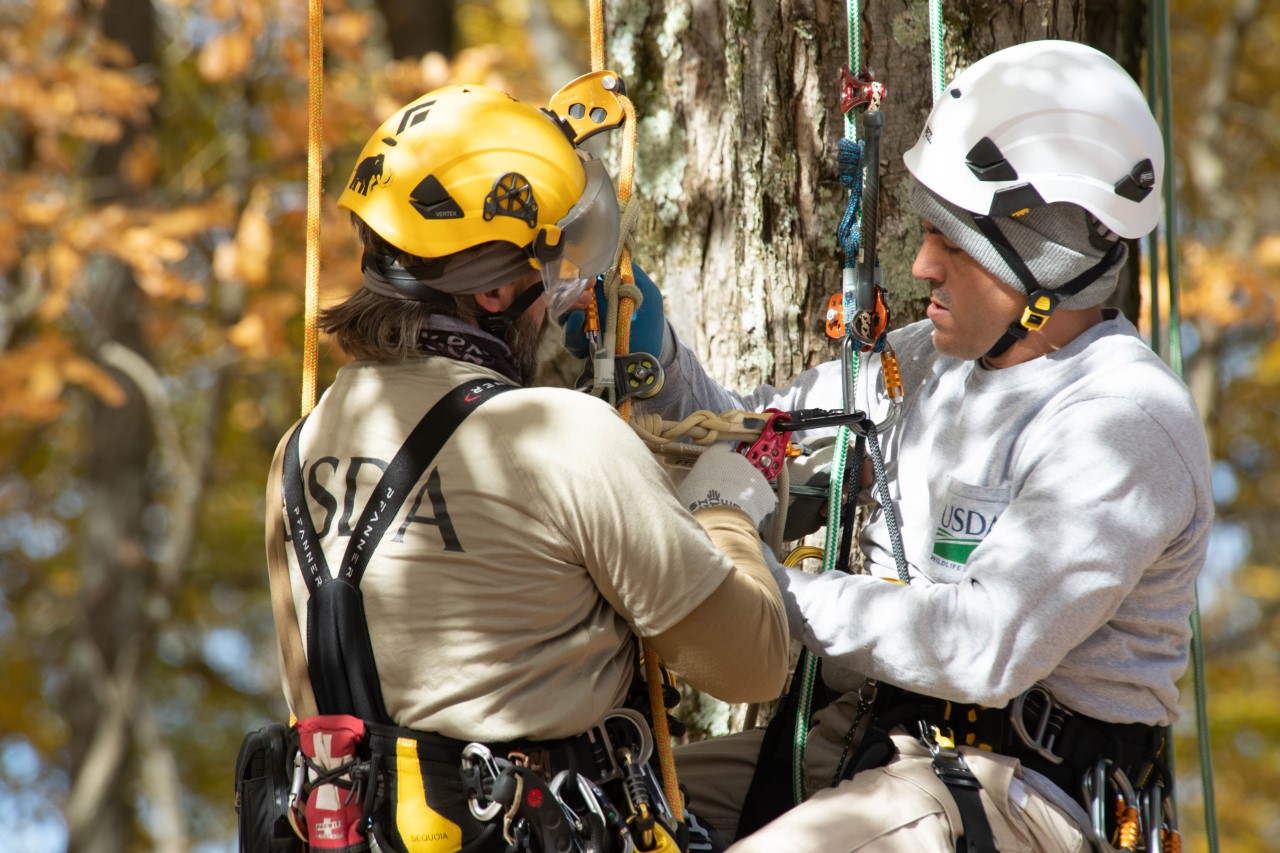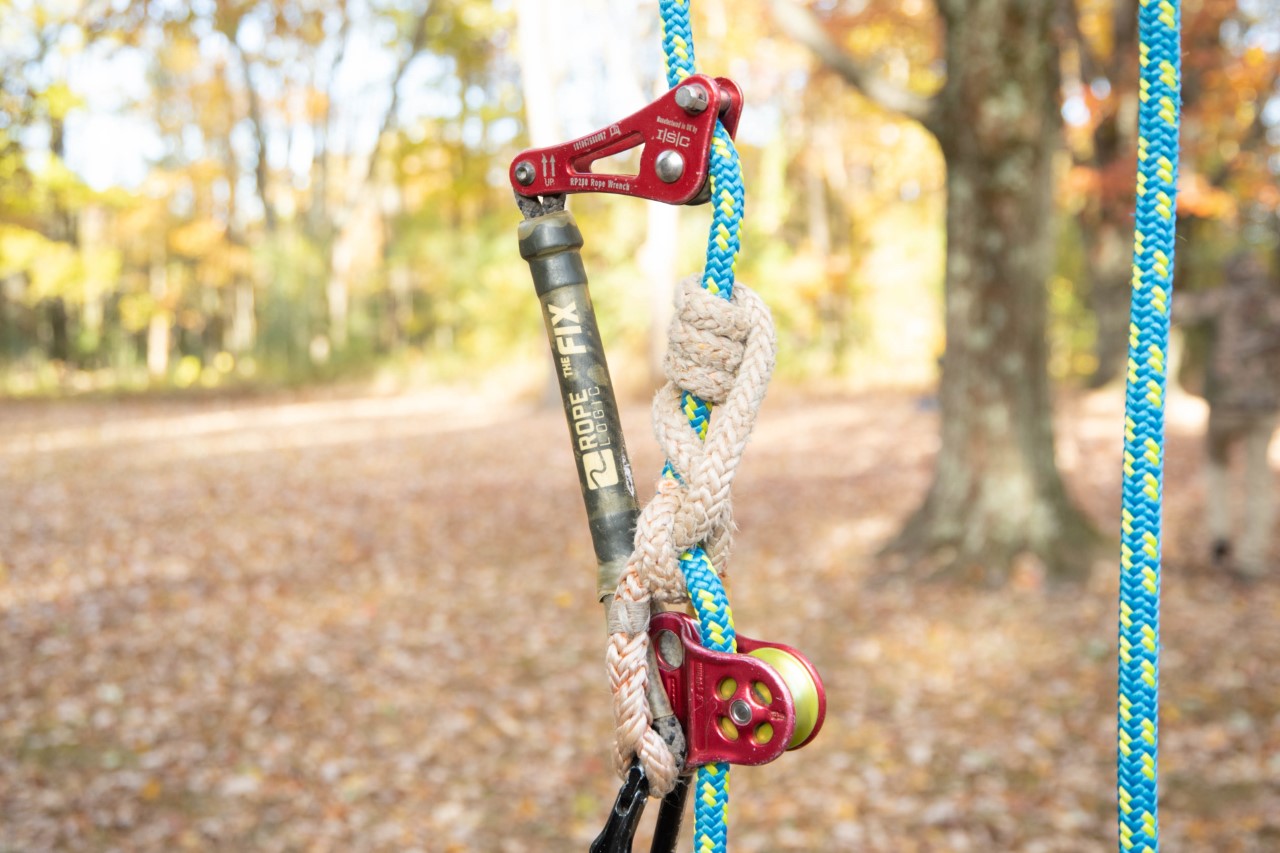For the first time ever, expert tree climbers with the Animal and Plant Health Inspection Service’s (APHIS) Asian Longhorned Beetle (ALB) Eradication Program trained fellow APHIS employees from another program on how to climb trees with a purpose.
The trainees were from APHIS’ Wildlife Services (WS) program, where employees help resolve wildlife conflicts to allow people and wildlife to coexist. Specifically, WS needed tree climber training so they could potentially relocate raptor nests to safer locations.
APHIS’ ALB program and USDA’s U.S. Forest Service belong to the National Tree Climbing Program, making these two agencies eligible to train others in the skilled craft of climbing and navigating tall trees safely and effectively.
In mid-October 11 WS employees from Ohio, Kentucky, and Tennessee joined 11 ALB tree climbers in Bethel, Ohio, in East Fork State Park to start on the path to becoming certified tree climbers.
Mastering the elements outlined in the National Tree Climbing Guide, WS employees learned how to use the Poacher’s and Running Bowline knots, move throughout the tree canopy, identify hazardous conditions, determine what activities are reasonable, identify the correct tools and methods. and perform an aerial rescue.
“The running bowline is what we use to install the anchor point when the rope is anchored to the tree,” said Marvin Enoe, ALB Tree Climbing Supervisor. “The Poacher’s Knot, which actually goes by a number of different names, is just the basic life-supporting connection knot between the hardware and the climber.
It’s always rewarding seeing somebody learn something that is unique and enjoy the process of learning and becoming proficient at a new skill set. And this training is beneficial to APHIS because we can train and certify our own employees on these skills without hiring external trainers,” Enoe added.
Rainer Nichols, WS’ National Training Academy Training Coordinator, who joined colleagues learning this new skill, said, “The most surprising aspect of the training was the amount of maneuverability one can have with just a single climbing rope and lanyard in a tree. The ability to ascend a tree, transition to a system to move in the canopy to access the target area, and then descend on the same rope from a different area of the tree was truly astonishing.”


